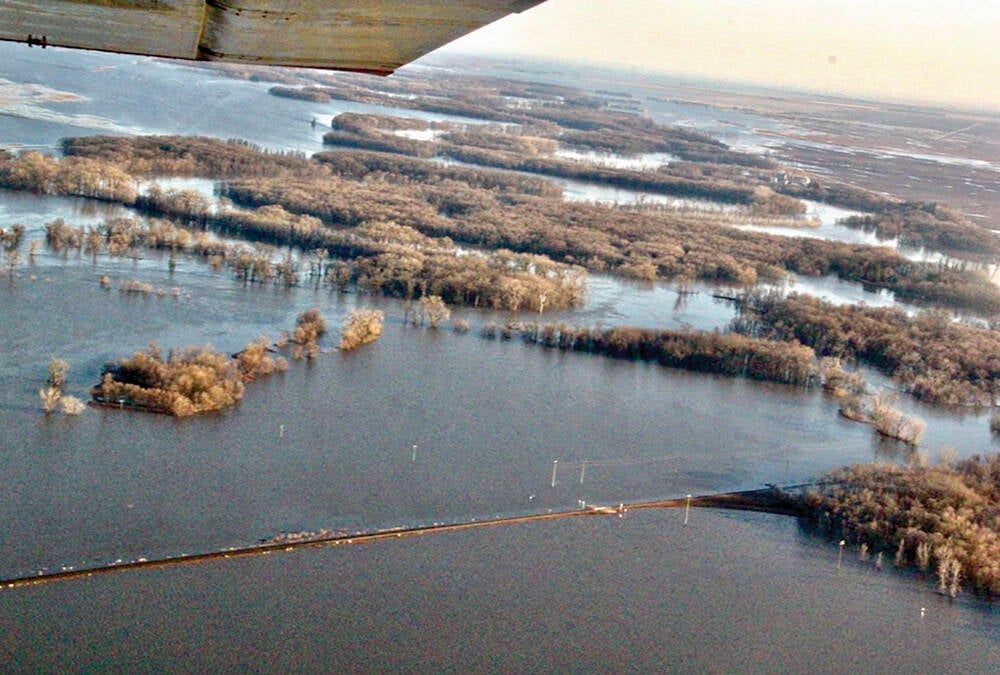The investigations surrounding Canada’s latest BSE case are focusing on feed regulations.
Some are calling for a complete ban on feeding animal material to other animals. They see it as the best way to keep BSE from spreading and to limit the risk that people could become infected by the human equivalent of the brain wasting disease.
“The first thing that must happen is to ban the feeding of any animal to any animal,” said Shiv Chopra, who describes himself as a veterinarian, scientific adviser and expert in infectious diseases. “Immediately you stop further contamination.”
Read Also

Rural Manitoba resources slim on natural disaster planning
A study from Brandon University’s Rural Development Institute has found that many rural and small municipalities don’t have the staff or resources to make formal climate plans against natural disaster.
Chopra was one of four scientists with Health Canada who last year urged Ottawa to implement a full ban on animal feed containing the rendered materials of other animals following the discovery of Alberta’s first BSE case. He was later fired for insubordination, at least partly for going public with his views on food safety in Canada.
“It has come to the point where nobody is thinking about safety. All they think about is profit.”
However, the federal government is making changes that it believes will keep BSE in check without the kind of ban promoted by Chopra. Among the planned changes is a ban on specified risk materials, such as the brain and spinal cord of ruminants, from all animal feed, including that of swine and poultry.
“Going to a complete animal to animal ban goes way beyond the risk management measures one might need to have in place to combat BSE from spreading,” said Sergio Tolusso, a Canadian Food Inspection Agency feed program co-ordinator.
“For BSE in particular, it goes beyond what we think we really need as far as mitigating the risk.”
Canada banned feeding ruminant protein to other ruminants in 1997. Tolusso said the ban has helped keep BSE from becoming an epidemic in this country.
He spoke confidently that the latest measure proposed for SRMs will “shorten the duration of incidence of the disease in the cattle herd.”
“If we were finding 10 or 100 (cases) at a time, that would be far more indicative of us having a true epidemic.”
Meanwhile, a news story circulated last week that raised questions about the defences raised against BSE in Canada between 1997 and 2000. Journalist Andrew Nikiforuk reported on a draft report prepared by two consultants for Health Canada in 2000.
In the report, Joan Orr and Mary Ellen Starodub suggested there were holes in the measures taken during those years to keep BSE out of Canada. The report said that importing animal feed and slaughterhouse waste had still been allowed from a number of countries in Europe, including the United Kingdom.
As well, Orr and Starodub saw weaknesses in the enforcement of the feed ban established in 1997.
“What this report was saying was this feed ban was basically done on the honour system and that it was monitored by the (Canadian Inspection) Food Agency and the food agency was basically checking paper,” said Nikiforuk. “For three years then, between 1997 and 2000, that’s the system we had. We had a permissive ban.”
According to Nikiforuk, the report by Orr and Starodub also concluded that BSE likely was already incubating in Canada, but had not yet revealed itself through clinical signs in cattle.
“It was the most comprehensive report written on BSE in Canada and yet it never saw the light of day.”
The draft report by Orr and Starodub was reviewed by a team of scientists with Health Canada and the CFIA.
There were shortcomings in the report that kept it from getting published and becoming public, said Health Canada spokesperson Margot Geduld.
The draft report lacked veterinary animal health perspectives and it didn’t demonstrate an understanding of the rendering industry or abattoir practices. It also lacked references or data that could be verified, Geduld said.
The CFIA continues regular monitoring of commercial feed mills in Canada, Tolusso said, and there is high compliance with federal feed regulations among those plants.
However, the agency inspects annually less than one percent of farms that mill their own feed.
Among other things, monitoring of all on-farm mills would carry a large cost for the federal government and Tolusso said it made more sense to concentrate on other measures that directly deal with the highest risk materials, namely the SRMs.














